Archive: 2 Night Endurance Fastpack – Trinity Alps Wilderness
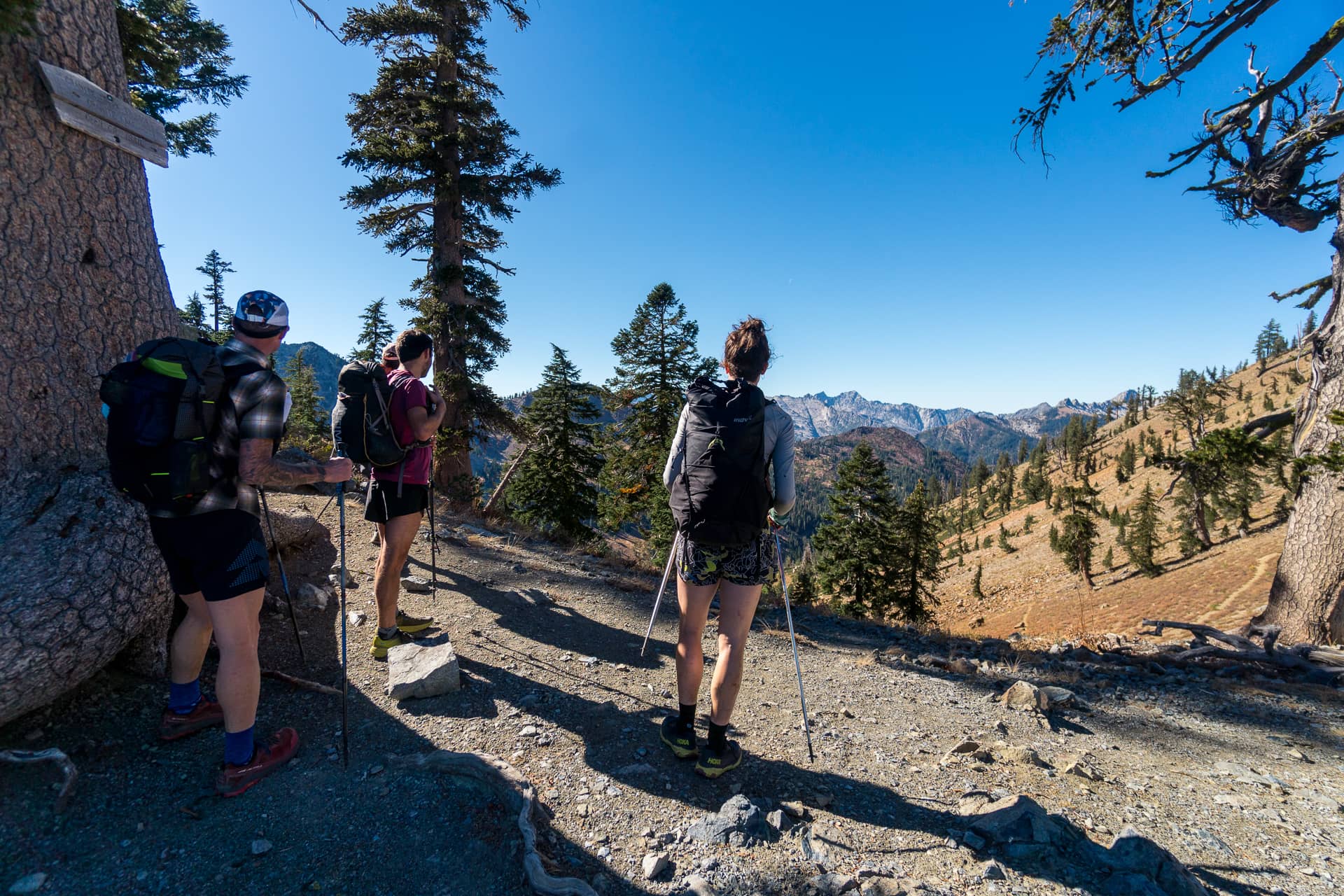
2 Night Endurance Fastpack
Trinity Alps Wilderness
July 16 – July 18
A 2 night 3 day guided fastpacking trip showcasing some of the best trails in all of the Trinity Alps Wilderness
Route Overview
Our endurance level fastpacking trips cover approximately 40-50 miles over the course of three days. The vertical gain and loss will vary depending on the exact route but you can expect between 10,000-12,000ft over the course of the weekend. There may be options to do a bit more for those who feel they are getting shorted!
Who is this trip for?
You do not need to have multi-day backcountry experience or fastpacking experience to come on this trip. Your guides will be able to teach you all you need to know to move through the terrain smoothly, safely, and with confidence. A base of fitness and experience hiking or running on trails is highly suggested for our endurance trips. Being able to fairly comfortably cover 15-25+ trail miles in a single day without a pack is a good litmus to know you should be able to handle this itinerary.
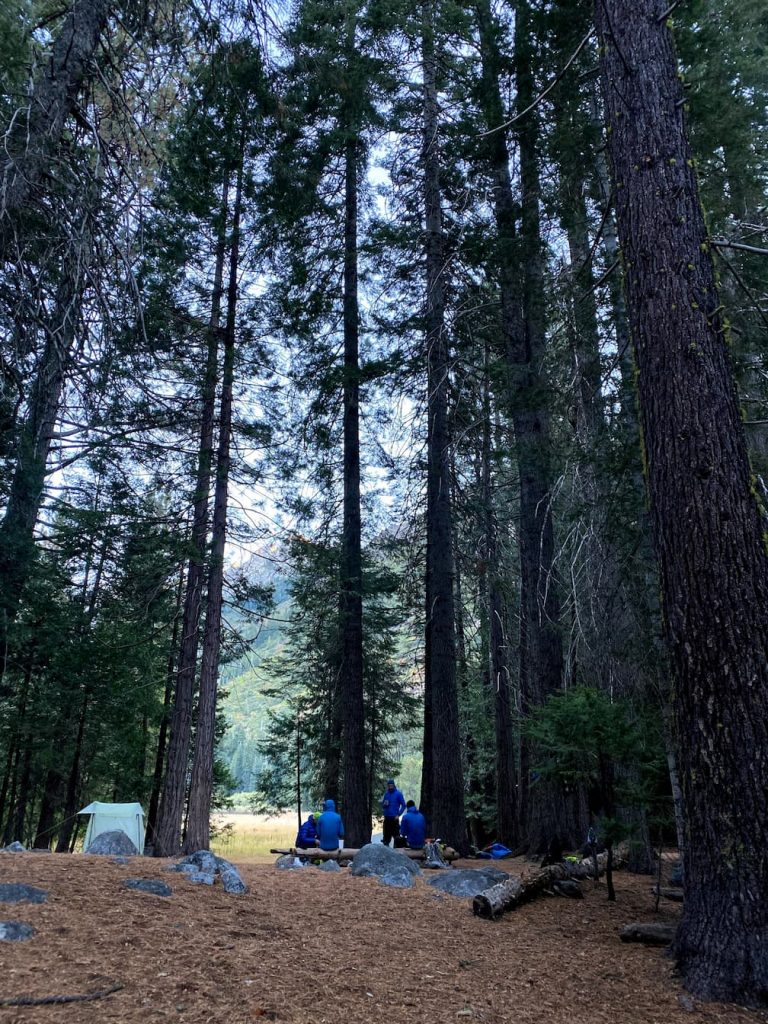
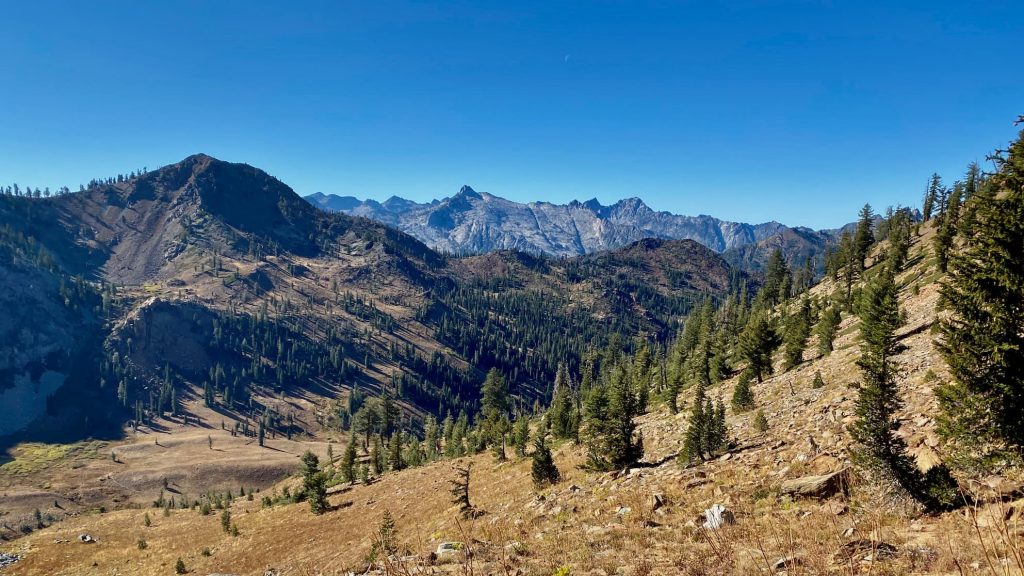
What is included in the price?
2 nights and 3 days of fully guided wilderness fastpacking experience. You will also be provided two nights dinners and two mornings breakfast during your fastpack.
Wilderness Fastpacking will provide the following fastpacking specific gear:
- Ultra light sleeping bag, pad, and sleeping bag liner
- Ultra light shelter (fully waterproof, or simply bug proof, depending on the weather)
- All cooking equipment (stoves, pot, cup/bowl/spoon)
- Group first aid kits, emergency satellite communications devices and detailed topo maps.
Items available for rent or purchase:
| Fastpack | Add $30 |
| Trekking Poles (for both runners and hikers) | Add $30 |
| Trail Food (snack/lunch while on the trail each day) | Add $65 |
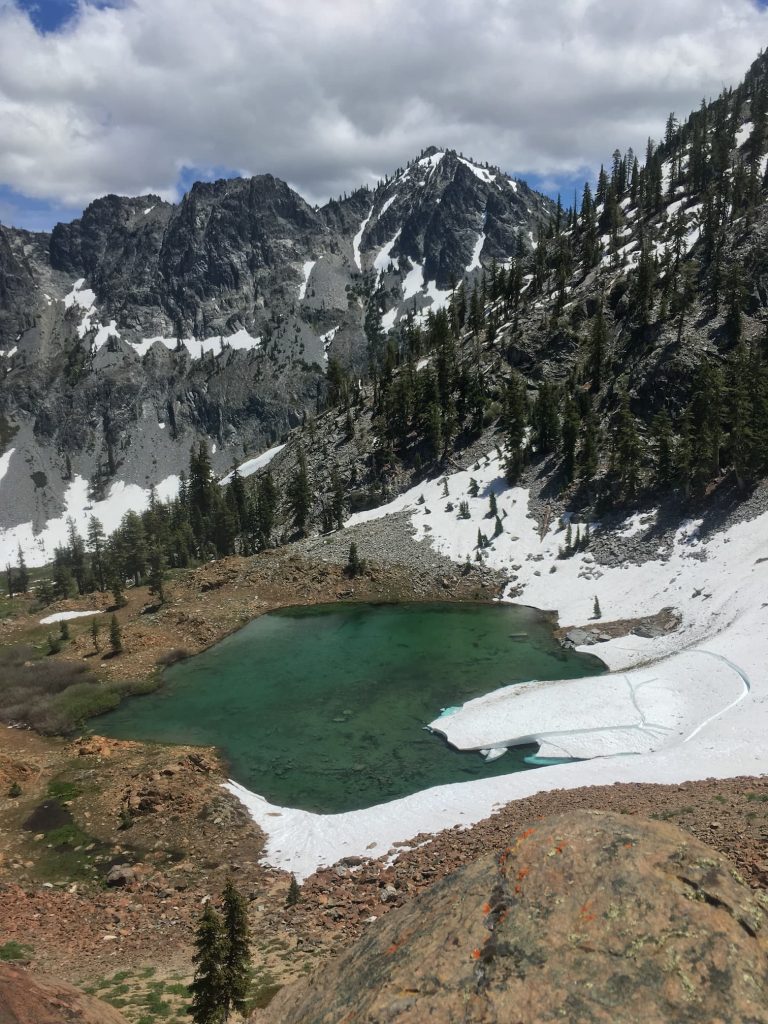
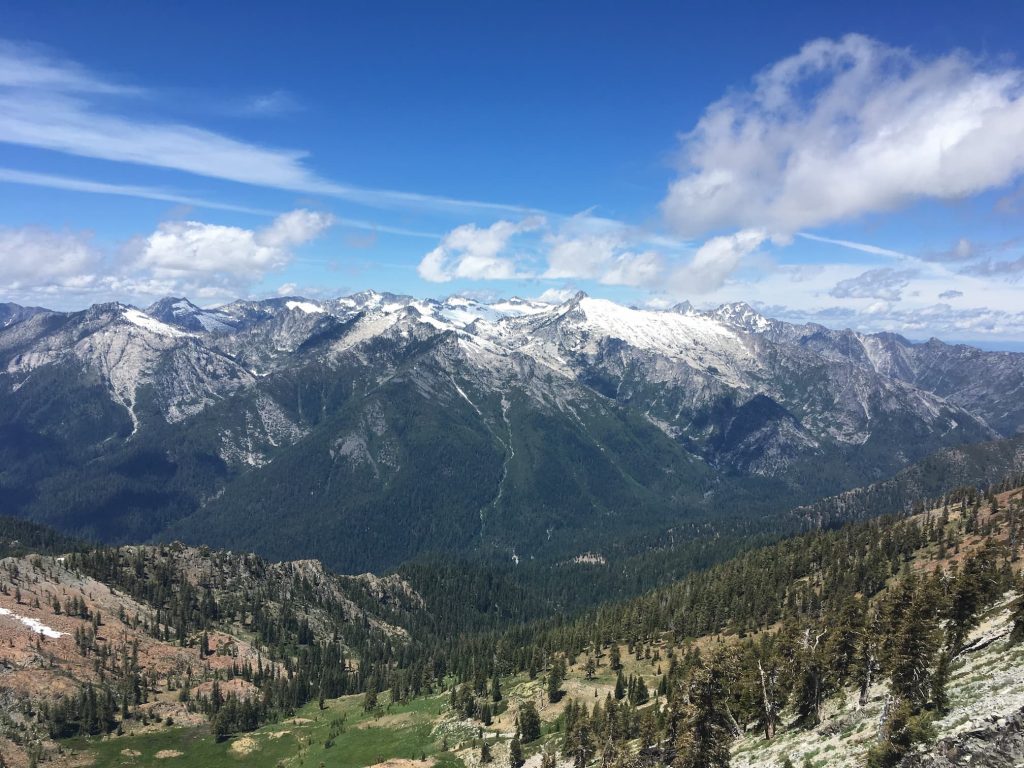
Gateway Cities
Weaverville, CA is approx. 1 hour drive time from our trailhead meeting point. The nearest airport is in Redding, CA approx. 2 hours drive from our meeting point. Flying into Medford OR is also an option. Drive time from Medford to the trailhead is approx. 3 hours.
We will also provide our guests with information about many of the other outdoor adventures there are in the area, if you care to extend your trip on either end.
What We Love About the Trinity Alps Wilderness
The Trinity Alps are not popular by California wilderness standards, but that does not mean they are any less wild or grand. Sheer granite faces, cascading wild rivers, huge old growth conifers, countless alpine lakes, and hundreds of miles of trail. The Trinity Alps might not be on the main stream radar, and yeah, they are not adjacent to a major city or freeway, but we think that is a good thing! For some of the best large scale wilderness experiences anywhere in the United States, the Trinity Alps are a good bet.
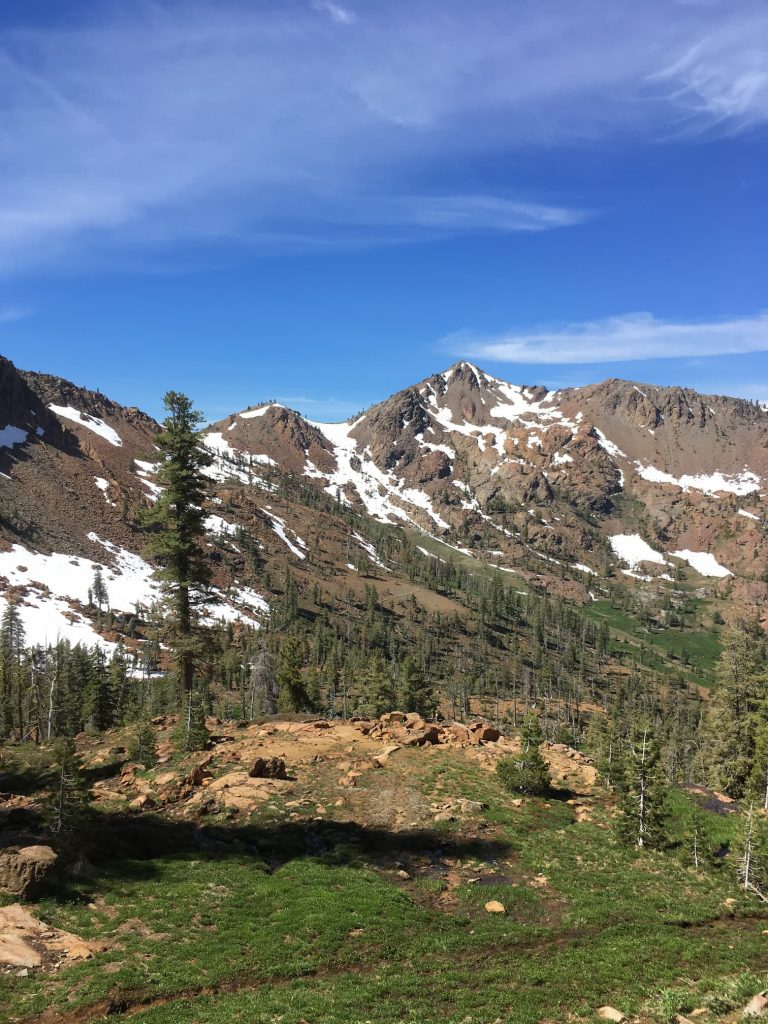
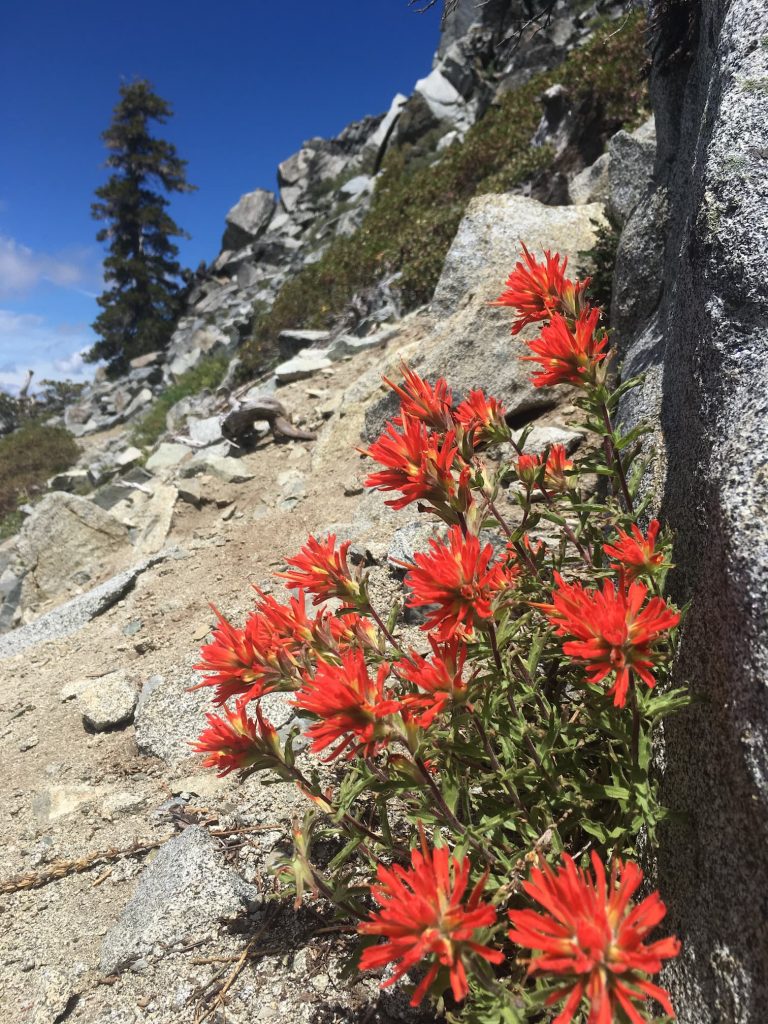
Detailed Logistics
Day 1: We will meet at the specified trailhead at 9am. (to be determined based on current conditions. All trailheads can be reached with a normal passenger vehicle) If you are traveling from out of town you’ll likely want to spend the night before our trip in either Weaverville, Trinity Center, of Coffee Creek. You will arrive at the trail with all the gear and food outline in your pre-trip packing list. (You will always be free to contact us during the lead up to your trip with any questions). We will all get acquainted, your guides will hand out all WF gear and group food. Then we’ll all dive in and pack our bags together. Learning to to be efficient and dialed on packing your bag is a key fastpacking skill you’ll be acquiring.
We’ll aim to set out on the trail by about 10am. Our plan for the day will be to cover between 12-18 miles depending on the specific itinerary. Each participant will have been given detailed pre trip briefings on navigation and mapping with an app on your phone. Your guides will help you learn to hone this skill out on the trail. We will have planned regrouping points throughout the day.
We will arrive at camp in the late afternoon to early evening. There your guides will help you set up your shelters and we’ll all get the kitchen prepped for a hearty dinner. We will all cook dinner together, but in small groups of 2-3 people who will be sharing a cook set. This is the optimal way to cook even in large groups with the nature of the weight and size of ultra light cooking equipment. Plus, we want you to LEARN! Cooking in the backcountry can be so much more than simply pouring boiling water in a plastic bag! Our meals are made with real ingredients and are quite simple to prepare. After dinner we’ll have plenty of time to relax, watch the sunset, converse, and generally rest up for the next days adventures.
Day 2: During the summer months first light comes early. We’ll get water on for coffee/tea around 6:30am. Breakfast by 7:30am and have camp packed up, out on the trail around 8:30am. We do hot breakfast at Wilderness Fastpacking. If you are worried about getting moving on s full stomach don’t. We make sure everyone knows to start out the first couple miles slow and easy to loosen up stiff muscles.
We will cover between 14-22 miles on the second day. We’ll likely pass by lakes that we can stop at to cool off, and we’ll cross over at least one or two passes with ample opportunity for world class photo ops. Much like day 1 we’ll arrive in camp in the late afternoon to early evening and repeat our evening ritual.
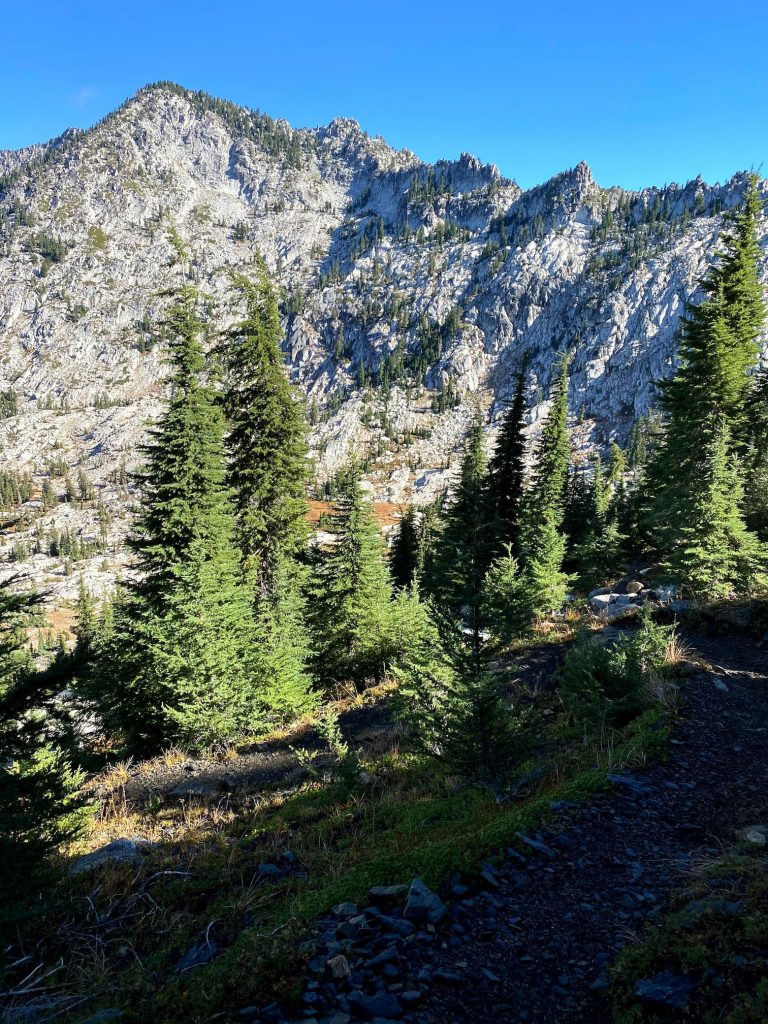
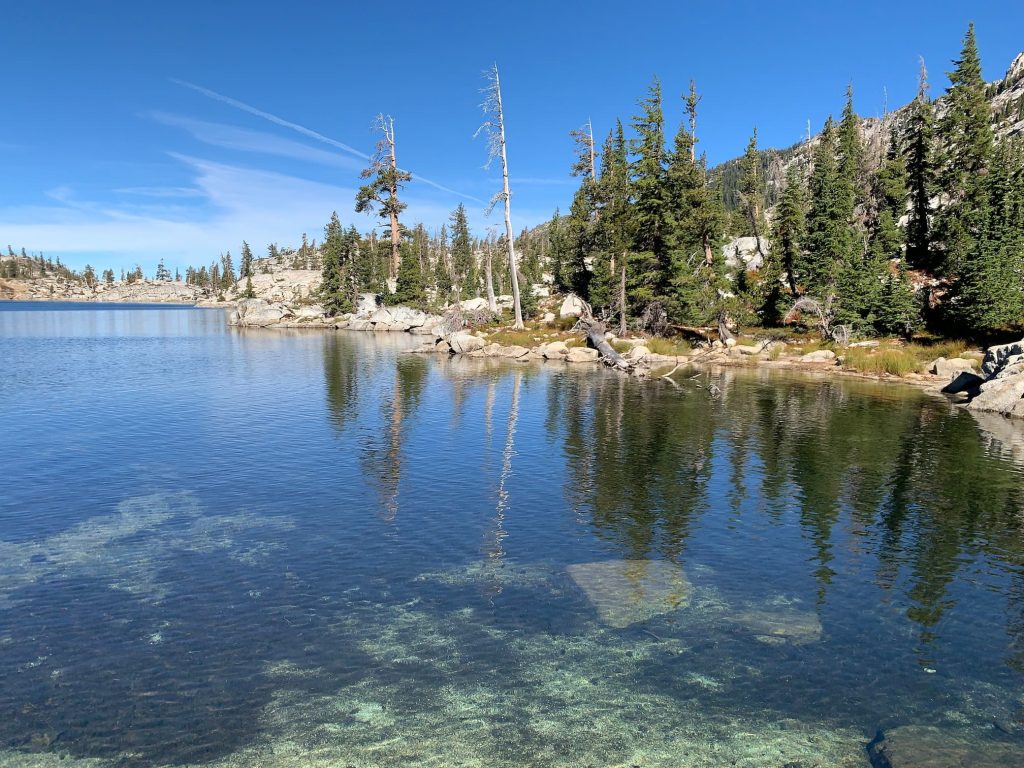
Day 3: On our final day we’ll begin with a similar time frame as day 2, though potentially with a little later starting time depending on how many miles we have left to cover to exit the wilderness back to our cars. Well likely have between 8-12 miles to cover on the final day. It’s our goal to have everyone back to the trailhead in time to make part or all of their drive back home or to your next nights lodging without having to press too hard.
As we wrap up our grand adventure and arrive back where we started we’ll make sure we have time to debrief, exchange phone numbers to photos can be shared. We’ll do a gear inventory to make sure everything gets back to where it needs to go.
We want everyone to leave the Trinity Alps feeling accomplished, tired, and inspired, with a bunch of new tools in your fastpacking took kit, to use on your next wilderness adventure whether with us, or out on your own.
Have Questions? Send us an email here: ryan@wildernessfastpacking.com
Ready to take the plunge and get yourself hooked on fastpacking in some of the best wild landscapes America has to offer? Hit the link to our sign up form below. We can’t wait to share the Trinity Alps with you this summer!
Archive: Late Season Fastpacking in the Trinity Alps
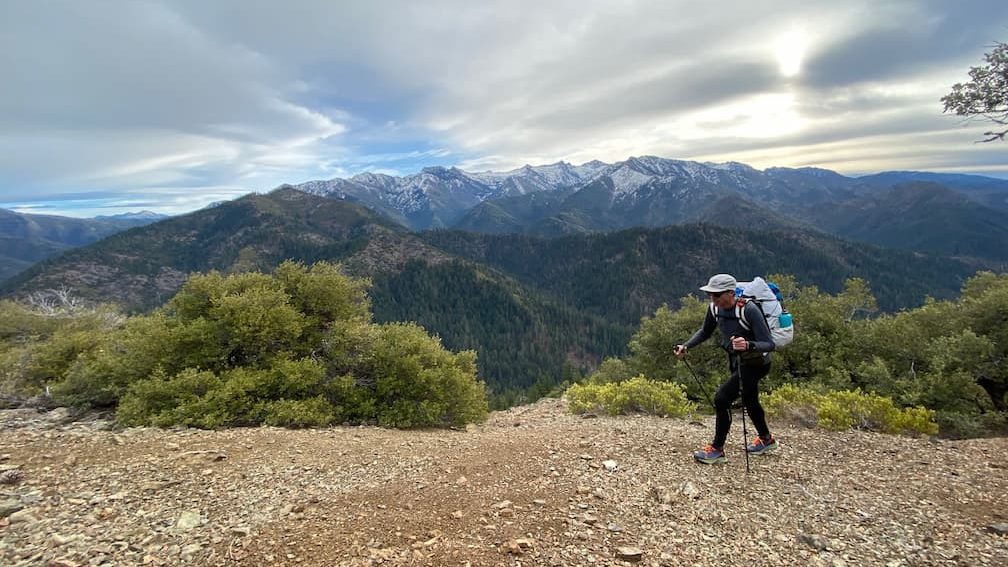
By the time December rolls around most people have forgotten about the high country and foot travel in the deeper wilderness areas of Northern California. Skis are being waxed and powder dreams are stirring. At the end of 2020 the mountains were nearly free of snow and I had fastpacking on my mind. The good news is that my buddy Chris McGovern almost never says no to a fastpacking mission even with sub freezing temperatures, inclement weather and short notice.
The Trinity Alps Wilderness is vast. It’s one of the larger contiguous wilderness areas in the lower 48. Much of the visitation (and almost all of my personal visitation) is confined to the Eastern half of the range. This is where the biggest mountains, lakes, and sheer granite faces lie. They call much of this Eastern half the White Trinities. When you stand atop a summit in the “Whites” you gaze out to the West and take in stacks on stacks of ridge lines and river valleys as far as the eye can see. All of this is roadless and totally wild. What it lacks in grandeur it easily makes up for with remoteness, solitude and probability of a bigfoot sighting.
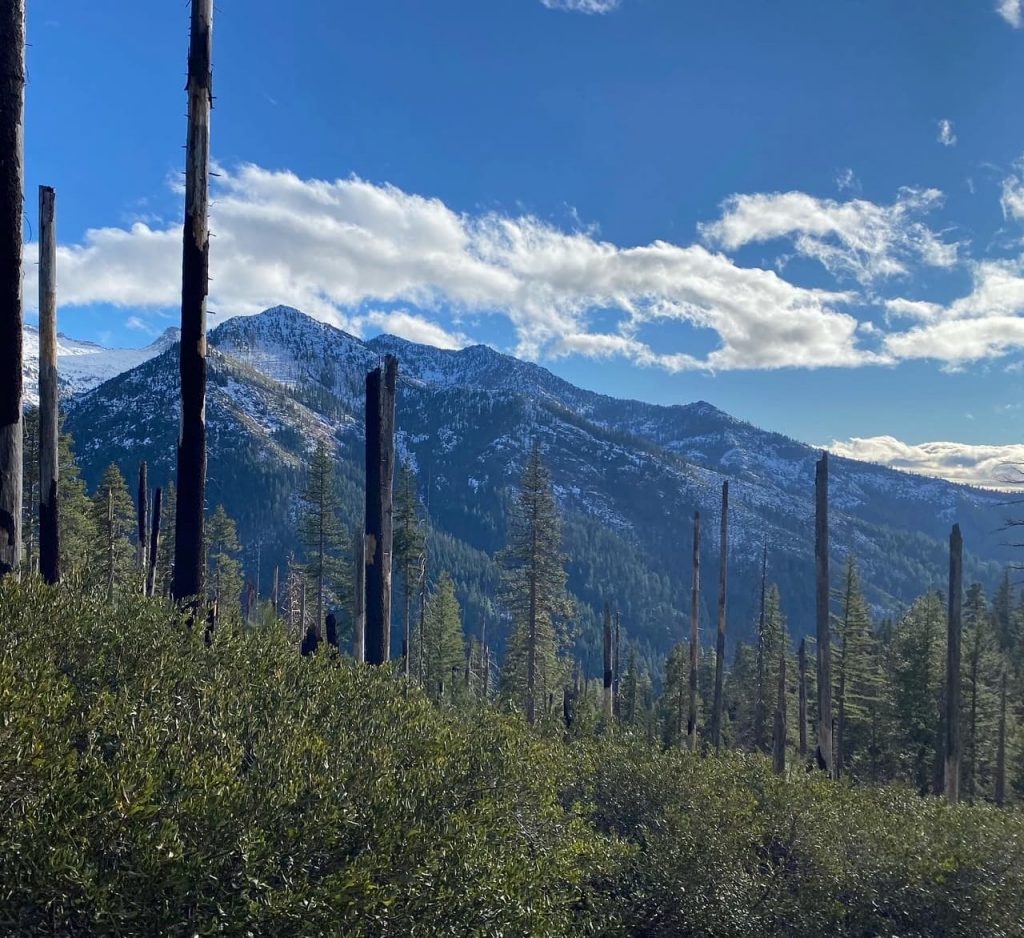
I asked Chris if he wanted to drive up for an end of the fall last fastpack hurrah. I told him my sights were set on edging into the “Greens”. I didn’t have great beta on the trail conditions, or maintenance status of the route. The forecast called for a chance of snow and rain with a bigger storm front pushing in late on our second day. Our cars were parked seven miles up a dirt road, so it was a bit of a roll of the dice if it would all go to plan and that we’d get tires back on pavement after the trip. Once we set feet to trail and got into a comfortable rhythm all the worries quickly slipped away.
On our first afternoon we ascended a ridge and dropped into the North Fork Trinity on a well used trail. We quickly made our way to Bob’s Farm trail where I knew chances were we’d find a less than maintained route, even though it is an established trail on the USFS maps. Lack of funding is a common theme and reason for the severe deterioration of our trails on federal public lands. Just FYI, this is something I very much want to see improved. We can easily lose 100s or 1000s of miles of trail in a matter of years. I strongly believe we will all be worse off and saddened to find many places we wish we had known about are no longer accessible. This won’t be the last you hear from me on this topic rest assured.
The North side of Bob’s farm is steep and in reasonably good condition. It began to snow on us and the light was waning. We crested the low gap in the ridge at 5,500ft and began the long descent into Rattlesnake Creek. The South side of Bob’s Farm Trail has all but disappeared , post fire brush engulfs the majority of the tread, but we were able to stay on track and connected with Rattlesnake Creek just as night fell. Since it was still fairly early as dusk came around 5pm, we donned headlamps and forged ahead a few more miles to where Rattlesnake Creek joins the North Fork of the Trinity River.
It was a cold and moody evening with rain spitting and temperatures in the high 30’s. Chris and I quickly set up our shelters and put on all the clothes we had. Dinner cooked, lost spoons miraculously found, bellies full, and a full value day behind us we settled in for a comfortably cool night in the woods.
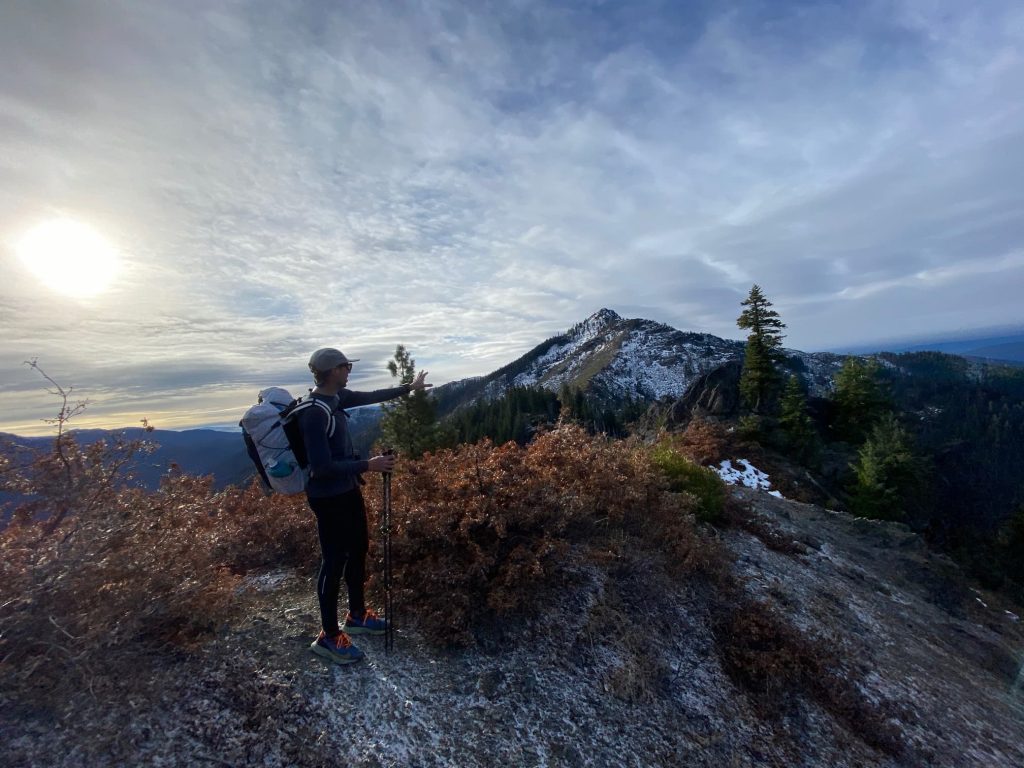
Waking up as the sky slowly changed hues, I had a feeling of complete disconnection from the outside world, many miles from the nearest road and likely many miles from the nearest human other than McGovern. I think that is part of the beauty of a late season fastpacking trip like this one. We were nearly guaranteed the highest level of solitude possible in today’s world. Its equal parts exhilarating and bewildering, cradled by this 5,000ft deep canyon and the constant babble of the North Fork Trinity.
We knew that snow was coming, it was only a matter of time. I had hoped we might complete a larger loop including a long stretch along Limestone Ridge where we’d have loads of views both East and West for the better part of 10 miles. We found Morrison Cabin and the trail which climbed 2,500ft from canyon bottom to ridge top in less than three miles. This trail was easy enough to follow, but generally lacking tread and overgrown. The views began to open up making all the cuts and scrapes well worth it. Finding yet another less than maintained trail along the top of the ridge, complete with patchy early season snow, it was evident that the right call was to head back down into the larger river drainage to our East where I knew the trail would be in reasonable shape.
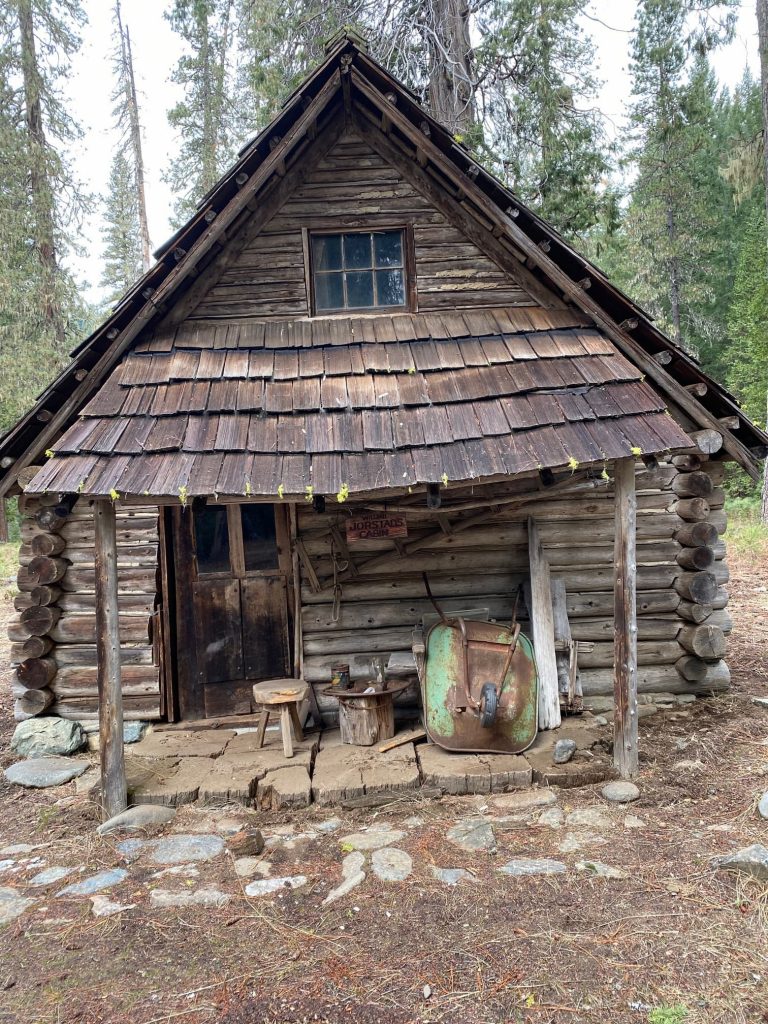
After 30 miles and 10,000ft of climbing over just more than 24 hours we arrived back to our vehicles and relative civilization, just as the snow began to fall in earnest. Yes this trip was quite impromptu, short, and outside of the norm. What I continue to realize more and more is that with the right gear and expectations one does not have to be limited to traditional times of year to visit the high country. Our packs were still light, even with heavier sleeping bags, I don’t think either of us carried more than 18lbs at any point. We could still easily do some jogging on the downhill and easier sections of trail. We experienced an amazing slice of country I had been wanting to get into for many years. Still, as I write this in late February I can’t help but daydream about long summer days, roaming free out in the Klamath Mountains.
This column was written by Wilderness Fastpacking Co-Founder Ryan Ghelfi